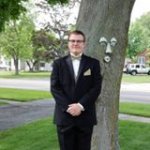
According to the First Law of Thermodynamics, nothing in the Universe (i.e., matter or energy) can pop into existence from nothing. All of the scientific evidence points to that conclusion. So, the Universe could not have popped into existence before the alleged “big bang†(an event which we do not endorse). Therefore, God must have created the Universe.
One of the popular rebuttals by the atheistic community is that quantum mechanics could have created the Universe. In 1905, Albert Einstein proposed the idea of mass-energy equivalence, resulting in the famous equation, E = mc^2. We now know that matter can be converted to energy, and energy to matter. However, energy and mass are conserved, in keeping with the First Law. In the words of the famous evolutionary astronomer, Robert Jastrow, “The principle of the conservation of matter and energy…states that matter and energy can be neither created nor destroyed. Matter can be converted into energy, but the total amount of all matter and energy in the Universe must remain unchanged forever†(1977). The idea of matter-energy conversion led one physicist to postulate, in essence, that the cosmic egg that exploded billions of years ago in the alleged “big bangâ€â€”commencing the “creation†of the Universe—could have come into existence as an energy-to-matter conversion.
If this is true then one just asks: “Where did the energy come from?â€
Energy could not have popped into existence without violating the First Law of Thermodynamics. So in reality, when scientists argue that quantum mechanics creates something from nothing, they do not really mean “nothing.†The problem of how everything got here is still present. The matter generated in quantum theory is from a vacuum that is not void.
Stephen Hawking can help put some light on this...
From this you can easily see how something can come from "Nothing". To give a quick example, you can get the Number "0" If you add "1" and "-1".
So what could this negative energy be. There are many ideas with what it could be. Some say it is anti-matter, some say it is the theroetical dark energy, while others say that the Big Bang produced a universe that travels in the oppisopte directing in the fourth Dimension, as neh297 showed us in his blog "Is There a Parallel Universe Moving Backwards in Time?".
Stay tuned for Part 2 as we give this idea of something from nothing some meat on its bones with mathmatics.
- Read more...
- 0 comments
- 705 views

